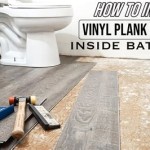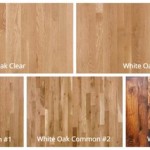```html
Engineered Timber Flooring: A Comprehensive Overview
Engineered timber flooring has become a popular choice for residential and commercial spaces, offering a blend of aesthetics, durability, and affordability. It provides the visual appeal of solid hardwood while addressing some of the inherent limitations associated with solid timber, such as susceptibility to moisture and dimensional instability. Understanding the construction, advantages, disadvantages, and maintenance requirements of engineered timber flooring is crucial for making informed decisions regarding flooring solutions.
The construction of engineered timber flooring involves bonding multiple layers of wood together. This layered construction is key to its performance. The top layer, known as the veneer or wear layer, is a thin slice of real hardwood. This layer determines the species, grade, and finish of the flooring, providing the desired aesthetic appeal. The core layers, which form the bulk of the plank, are typically made from hardwood plywood, high-density fiberboard (HDF), or softwood. These core layers are designed to provide stability and resist warping or cupping, common issues with solid wood flooring in fluctuating humidity environments. The bottom layer, often called the backer, provides additional stability and helps to balance the plank.
The manufacturing process involves carefully selecting and preparing the wood for each layer. The core layers are often constructed with alternating grain directions, which further enhances stability and reduces the risk of movement. The hardwood veneer is then bonded to the core layers using strong adhesives and high pressure. After bonding, the planks are precisely milled to ensure consistent dimensions and a tight, seamless fit during installation. Finally, the flooring is finished with multiple coats of durable sealant, providing protection against wear, scratches, and stains.
Stability and Durability
One of the primary advantages of engineered timber flooring is its superior stability compared to solid hardwood. The multi-layered construction significantly reduces the risk of expansion and contraction due to changes in humidity and temperature. This makes engineered flooring a more suitable option for environments where solid wood might be problematic, such as basements, bathrooms, or areas with fluctuating humidity levels. The cross-directional layering of the core prevents the wood from expanding or contracting uniformly, minimizing the potential for warping, cupping, or gapping between planks.
The durability of engineered timber flooring is also a key selling point. The wear layer, made of real hardwood, provides the same natural beauty and feel as solid wood. The thickness of this wear layer varies depending on the product grade and intended use. Thicker wear layers can withstand more wear and tear and can be sanded and refinished multiple times, extending the lifespan of the flooring. Engineered flooring is generally more resistant to scratches and dents than softer solid wood species, although the specific durability depends on the species and finish of the wear layer.
The finish applied to engineered timber flooring plays a significant role in its overall durability and resistance to staining and moisture. Common finishes include polyurethane, UV-cured acrylic, and oil-based finishes. Polyurethane finishes are known for their durability and resistance to scratches and wear. UV-cured acrylic finishes offer excellent stain resistance and are often used in high-traffic areas. Oil-based finishes provide a natural look and feel and can be easily repaired, but they may require more frequent maintenance.
Installation and Cost Considerations
Engineered timber flooring offers versatile installation options, making it easier and often less expensive to install than solid hardwood. Common installation methods include floating, gluing, or nailing. Floating installations involve connecting the planks together using a tongue-and-groove system, without adhering them to the subfloor. This method is relatively quick and easy, and it allows the flooring to expand and contract freely. Gluing involves applying adhesive to the subfloor and then securing the planks in place. This method provides a more solid and stable feel underfoot. Nailing is typically used for thicker engineered planks and involves securing the planks to the subfloor using nails or staples.
The cost of engineered timber flooring varies depending on the species, grade, thickness of the wear layer, and finish. Generally, engineered flooring is less expensive than solid hardwood, primarily due to the lower material cost of the core layers. However, premium engineered flooring with thick wear layers and exotic wood species can be comparable in price to solid hardwood. Installation costs also vary depending on the chosen method and the complexity of the project. Floating installations are typically less expensive than glued or nailed installations.
When considering the overall cost of flooring, it is important to factor in not only the initial purchase price but also the long-term maintenance costs. Engineered flooring requires regular cleaning and may need to be refinished periodically, depending on the wear layer thickness and the level of traffic. Solid hardwood, while often more expensive upfront, can typically be sanded and refinished more times than engineered flooring with a thin wear layer, potentially extending its lifespan.
Maintenance and Environmental Impact
Proper maintenance is essential for preserving the beauty and extending the lifespan of engineered timber flooring. Regular sweeping or vacuuming is necessary to remove dirt and debris that can scratch the surface. Damp mopping with a pH-neutral cleaner specifically designed for wood floors is recommended for removing spills and stains. Avoid using excessive water or harsh chemicals, as these can damage the finish and potentially warp the core layers. Protective mats should be placed at entrances to trap dirt and moisture, and furniture should be equipped with felt pads to prevent scratches.
The environmental impact of engineered timber flooring is an important consideration for many consumers. Look for products that are certified by organizations such as the Forest Stewardship Council (FSC), which ensures that the wood is sourced from sustainably managed forests. Engineered flooring can also be more environmentally friendly than solid hardwood because it uses less hardwood overall, maximizing the use of each tree. The core layers are often made from recycled wood fibers or sustainably harvested softwood, further reducing the environmental footprint.
The adhesives used in the manufacturing of engineered timber flooring can also impact the environment. Look for products that use low-VOC (volatile organic compound) adhesives, which minimize indoor air pollution. Some engineered flooring manufacturers are also committed to using formaldehyde-free adhesives, further reducing the potential for harmful emissions.
When disposing of engineered timber flooring, it is important to consider recycling options. Some components of the flooring, such as the hardwood veneer and some core layers, can be recycled. However, the disposal options may depend on the specific materials used and the local recycling facilities. Contacting the manufacturer or a local flooring retailer can provide information on proper disposal methods.
```
Engineered Timber Sydney Flooring

Best Engineered Hardwood Floor For Scratch Resistance Lifecore Flooring S

What You Need To Know About Engineered Hardwood Flooring Renaissance Floors

Sustainable Stylish Timber Flooring Options Floorworld

Engineered Timber Flooring Cost In Sydney Updated 2024 Floorvenue

Engineered Timber Flooring Explained Forté

Engineered Timber Flooring Installation Havwoods

Engineered Timber Flooring

Engineered Timber Flooring Pros And Cons Versace Timbers

Engineered Timber Flooring Floorboards Melbourne
Related Posts








